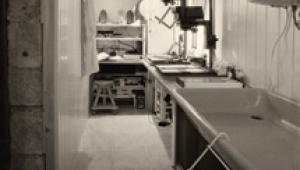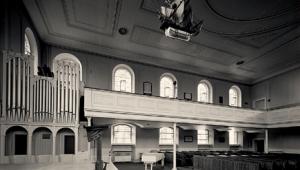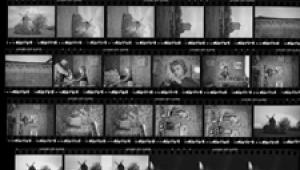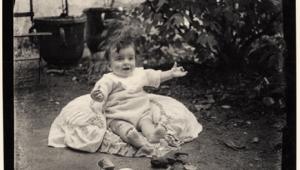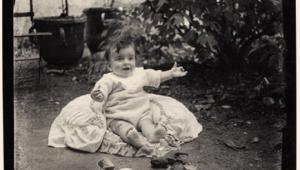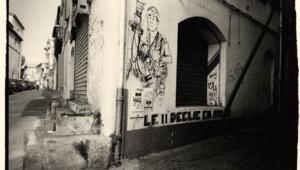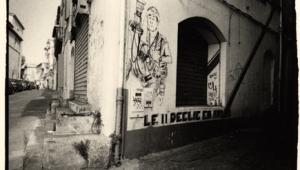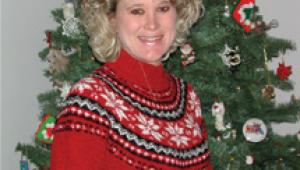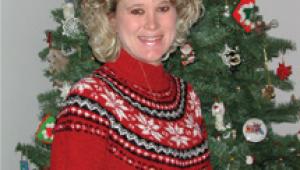The Darkroom
Large Format Darkroom; Mix And Match For Fun And Ease Page 2
Deep-tank processors give excellent temperature control and are the traditional route, with the film held on hangers (which can again lead to uneven development unless you are careful about agitation). They take a lot of developer: rarely less than two gallons, and often as much as five. Floating lids preserve the developer, which is usually replenished and infrequently replaced.
A useful alternative to a traditional deep tank is a Nova slot processor, using the Nova clip to hold the negative. This is my preferred route for 5x7" and 8x10". It leaves two tiny pinpricks on the edge of the negative, but they aren't in the image area, so this doesn't worry me. Agitate in the same way as for a traditional deep tank: every 30 seconds, lift the film out of the tank and let it drain from one corner. The next time, let it drain from the other corner. Short stop and fixing are done much the same way, and you can either wash the negatives in running water or use several changes: six five-minute changes is traditional, but with single sheets, four one-minute changes with constant agitation may well be enough.
 |
|
|
However you process the negatives, drying is quite simple. A final rinse in distilled water with a drop or two of wetting solution, then hanging by one corner in a dust-free environment. Store negatives in glassine or archival plastic negative bags.
Printing Tips
And so to print. Enlarging is exactly the same as for 35mm and roll film, but
with a bigger enlarger (and a longer lens--a "standard" enlarger
lens for 4x5" is 150mm). Contact printing is even easier. Simply crank
up the head of your existing enlarger until it is throwing a big enough area
of light. Turn off the light; place the negative/paper sandwich on the baseboard;
expose.
With a Variable Contrast (VC) head, or VC filters, you can use VC paper. Dodge
and burn in the same way that you do with an enlarger: the only difference is
that you are manipulating the light before it gets to the negative/paper sandwich,
instead of between the negative and the paper.
The word "contact" is important: negatives are slippery things.
A piece of clean glass is all you need to hold the negative/paper sandwich in
place: "swipe" the edges so you don't cut yourself. Mark the
limits of illumination on your baseboard so that you can place your negative/paper
accurately under safelight.
Alternatively, use a specially-made proofer with foam backing and a glass cover.
Mine is from PrintFile. I leave it on the baseboard and just change the film
and paper for each print.
Either approach gives you a black border. For a white border, cut a black paper
mask and tape that to the glass; then tape the negative in place; then put the
whole sandwich on top of the paper.
If you are careful you can even use a conventional easel, setting up the borders
and placing the paper in the easel. Then carefully place the negative on the
uncovered portion of the paper, either without glass or with a piece of glass
cut precisely to the negative's dimensions. I find it best to lay the
negative on the paper with the easel closed: some easels work better for this
than others.
 |
|
|
Alternative Processes
The great glory of contact prints, though, can be "alternative"
processes such as Printing-Out Paper (POP), argyrotype, cyanotype, salted paper,
platinum/palladium, and more. All require a negative of the same size as the
final print. It is possible to make internegatives by enlargement, either "wet"
or electronically (using a film writer or even an ink jet printer), but this
removes the final image another generation from the negative. At best, it's
a compromise; often, it's a bad compromise.
Many "alternative" prints (though not POP) look like inferior silver
gelatine enlargements when reproduced in books and magazines, but as originals,
they have a charm that is almost impossible to describe: the image tones, the
paper textures, the very lack of detail, can all combine for superb effects.
Of course, they can also look awful, but that's another matter!
Most "alternative" processes require very long exposures, often
to UV-rich light, and many are "printing-out" processes: that is,
the image is produced directly, without development. You can use fancy contact
printers with banks of UV lights, or you can do it the way our ancestors did
with sunlight and printing-out frames. The latter look like heavy picture frames
with an oddly hinged back held in place by spring clips.
 |
|
|
The negative goes against the glass
at the front (preceded by a black paper cutout mask if you want a white border);
then comes a layer of Mylar film, to protect the negative from the printing
paper (some alternative process papers contain chemicals that can harm the negative
if there is the slightest hint of moisture); then the paper; then the hinged
back. Lifting one side of the hinged back allows you to inspect the paper from
time to time, under subdued light (ordinary room lighting, not fluorescent,
is fine) while the other side holds the sandwich in perfect registration.
There you have it. You can mix and match to suit yourself: anything from William
Henry Fox Talbot's salted paper to scans and ink jets. And you'll
get a look that simply cannot be equaled with smaller formats. So why not try
it?
- Log in or register to post comments
